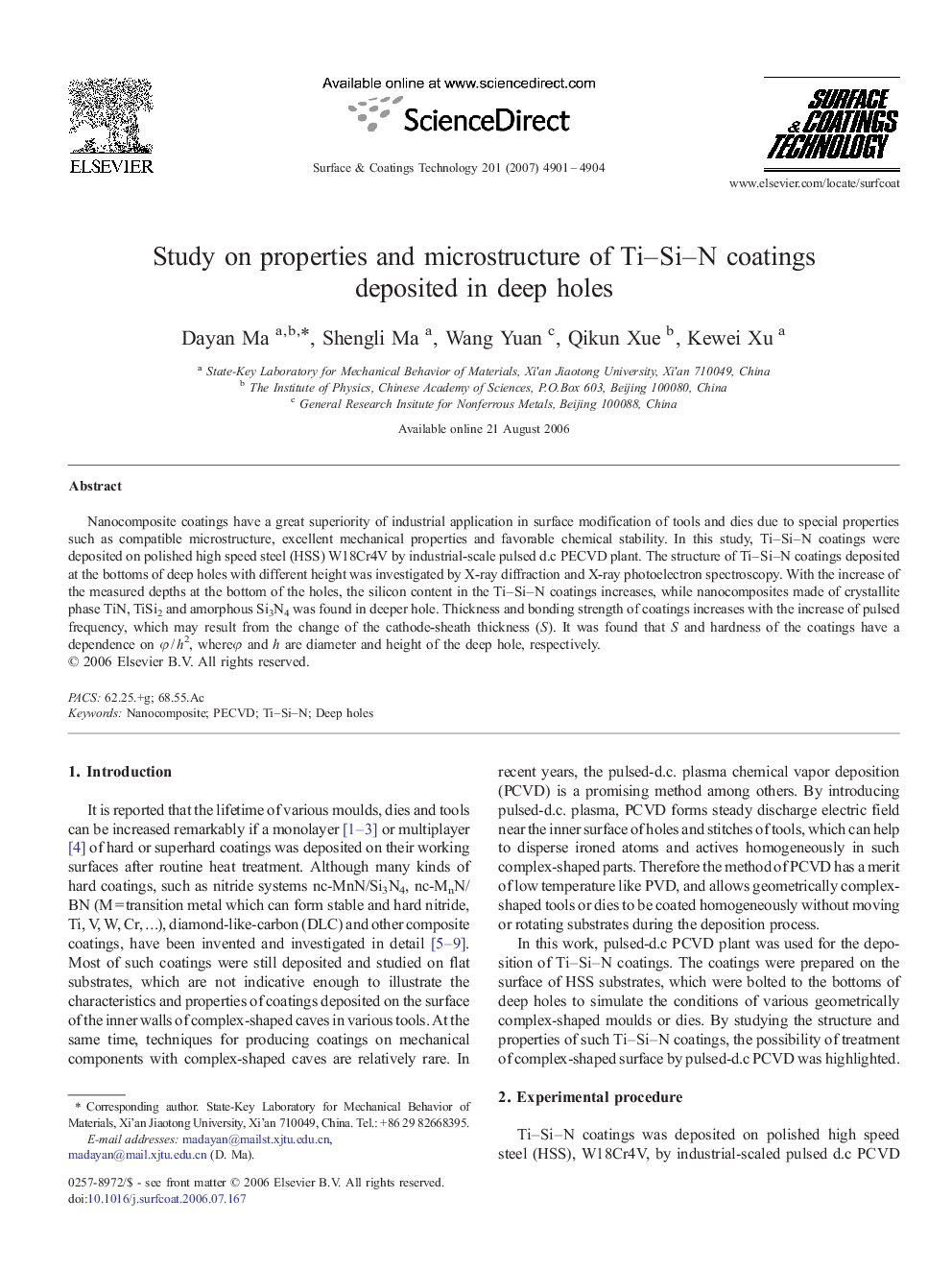| Article ID | Journal | Published Year | Pages | File Type |
|---|---|---|---|---|
| 1661547 | Surface and Coatings Technology | 2007 | 4 Pages |
Nanocomposite coatings have a great superiority of industrial application in surface modification of tools and dies due to special properties such as compatible microstructure, excellent mechanical properties and favorable chemical stability. In this study, Ti–Si–N coatings were deposited on polished high speed steel (HSS) W18Cr4V by industrial-scale pulsed d.c PECVD plant. The structure of Ti–Si–N coatings deposited at the bottoms of deep holes with different height was investigated by X-ray diffraction and X-ray photoelectron spectroscopy. With the increase of the measured depths at the bottom of the holes, the silicon content in the Ti–Si–N coatings increases, while nanocomposites made of crystallite phase TiN, TiSi2 and amorphous Si3N4 was found in deeper hole. Thickness and bonding strength of coatings increases with the increase of pulsed frequency, which may result from the change of the cathode-sheath thickness (S). It was found that S and hardness of the coatings have a dependence on φ / h2, whereφ and h are diameter and height of the deep hole, respectively.
